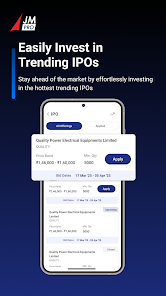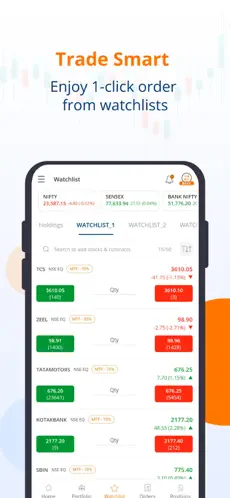Loan Apps In India For Hassle Free Borrowing
Managing financial needs has changed significantly with the rise of digital platforms. Today, loan apps in India offer a simple and accessible way for individuals to meet short-term and personal funding requirements without traditional complexities. Instead of visiting multiple offices or handling paperwork, borrowers can now complete an Online Loan Apply process using their mobile devices.

The growing demand for instant access to funds has made the personal loan app model more relevant than ever. These applications focus on convenience, transparency, and user comfort while maintaining a structured lending approach. This explains how loan apps in India work, their benefits, eligibility requirements, and how to use them responsibly for hassle-free borrowing.
Understanding Loan Apps in India
Loan apps in India are digital platforms that allow users to apply for loans directly through a mobile application or web interface. These platforms remove the need for physical documentation and long approval timelines by using digital verification methods.
The primary goal of these apps is to simplify borrowing. Users can check eligibility, submit details, and track their application status in one place. With online loan apply systems, the entire journey becomes faster and more structured, especially for individuals seeking short-term or personal financial support.
Why Loan Apps Are Becoming Popular
Easy Digital Access
Loan apps provide round-the-clock access, allowing users to apply anytime without time constraints. This flexibility suits working professionals, students, and self-employed individuals alike.
Reduced Paperwork
Traditional lending often involves extensive documentation. Loan apps minimize this by relying on digital identity checks and income verification, making the personal loan app experience smoother.
Faster Processing
Many loan apps in India focus on quick processing. Once the online loan apply steps are completed, approvals and disbursals are usually handled within a short timeframe.
How Online Loan Apply Works
The online loan application process is designed to be user-friendly and straightforward. While steps may vary slightly, the structure remains similar across platforms.
Step 1: Registration
Users create an account using basic personal and contact details.
Step 2: Eligibility Check
The app evaluates eligibility based on age, income, and financial history.
Step 3: Document Submission
Digital documents such as identity proof and income details are uploaded securely.
Step 4: Loan Review
The application is reviewed using automated systems to ensure accuracy and compliance.
Step 5: Disbursal
Once approved, funds are transferred directly to the user’s bank account.
This streamlined process highlights why loan apps in India are increasingly preferred over traditional borrowing methods.
Types of Loans Available Through Apps
Personal Loans
A personal loan app commonly offers unsecured loans that can be used for various needs such as education, travel, or household expenses.
Short-Term Loans
These loans are designed for temporary financial gaps and usually come with shorter repayment periods.
Emergency Loans
Some apps cater to urgent requirements, enabling quick access to funds during unforeseen situations.
Each loan type comes with defined terms, helping users choose options that align with their financial capacity.
Eligibility Criteria to Consider
Although loan apps aim to simplify access, basic eligibility rules still apply.
- Applicant must be an Indian resident
- Minimum age requirement is usually met
- Stable income source preferred
- Valid bank account and identity proof required
Meeting these conditions ensures a smoother online loan apply experience and reduces the chances of rejection.
Benefits of Using a Personal Loan App
Transparency
Loan apps in India clearly display loan terms, repayment schedules, and applicable charges before confirmation.
Convenience
Borrowers can manage applications, repayments, and loan history directly from their mobile devices.
Time Saving
The digital nature of the personal loan app process eliminates delays associated with physical verification.
Responsible Borrowing Through Loan Apps
While loan apps make borrowing easier, responsible usage is essential.
Borrow Only What You Need
Avoid applying for higher amounts than required, as it increases repayment pressure.
Review Repayment Terms
Always understand repayment timelines and installment amounts before accepting a loan.
Maintain Financial Discipline
Timely repayments help build a positive financial record and improve future eligibility.
Using loan apps in India wisely ensures long-term financial stability rather than short-term relief.
Security and Data Protection
Most loan apps use encrypted systems to protect user data. Personal and financial details shared during the online loan apply process are stored securely. Users should still ensure they download apps from trusted platforms and avoid sharing sensitive information with unknown sources.
Future of Loan Apps in India
The digital lending ecosystem continues to evolve. Loan apps in India are expected to focus more on user education, simplified repayment tools, and improved accessibility. As technology advances, the personal loan app experience will become even more seamless and transparent.
Conclusion
Loan apps in India have transformed the borrowing landscape by offering accessible, structured, and efficient financial solutions. With the ability to complete an online loan application process from anywhere, users no longer need to rely on time-consuming traditional methods. A personal loan app provides flexibility, clarity, and control when used responsibly.
By understanding eligibility, reviewing terms carefully, and borrowing within limits, individuals can use loan apps as a practical financial support tool. As digital lending grows, these platforms will continue to play a key role in simplifying personal finance while promoting hassle-free borrowing.






